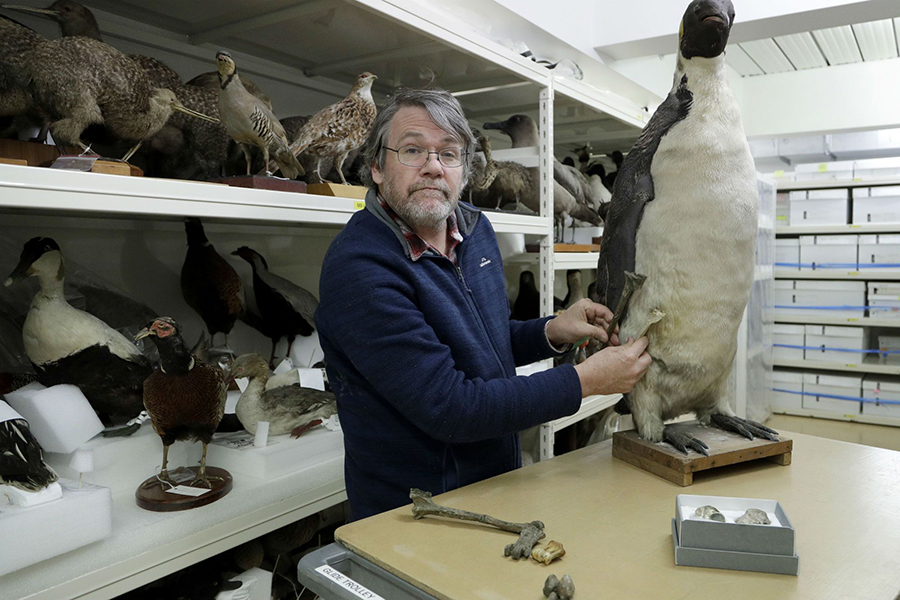Crossvallia waiparensis: Ancient Monster Penguin Unearthed in New Zealand

The fossilized bones of a large-sized penguin species that lived during the Paleocene Epoch (between 66 and 56 million years ago) have been discovered in New Zealand.
Named Crossvallia waiparensis, the ancient penguin was about 5.2 feet (1.6 m) tall — taller than today’s 4-foot (1.2 m) Emperor penguin — and had a mass of between 70 and 80 kg.
Its leg bones and two ends of the humerus were unearthed by amateur paleontologist Leigh Love at the Waipara Greensand fossil site in 2018.
Dr. Gerald Mayr from the Senckenberg Natural History Museum and colleagues analyzed the bones and concluded they belonged to a previously unknown penguin species.
They concluded that the bird’s closest known relative is a fellow Paleocene species Crossvallia unienwillia, which was identified from a fossilized partial skeleton found in the Cross Valley in Antarctica in 2000.
“Finding closely related birds in New Zealand and Antarctica shows our close connection to the icy continent,” said Dr. Dr Paul Scofield, a paleontologist at Canterbury Museum.
“When the Crossvallia species were alive, New Zealand and Antarctica were very different from today — Antarctica was covered in forest and both had much warmer climates.”

The leg bones of both Crossvallia penguins suggest their feet played a greater role in swimming than those of modern penguins, or that they hadn’t yet adapted to standing upright like modern penguins.
Crossvallia waiparensis is the fifth ancient penguin species described from fossils uncovered at the Waipara Greensand site.
“The Waipara Greensand is arguably the world’s most significant site for penguin fossils from the Paleocene epoch,” Dr. Mayr said.
“The fossils discovered there have made our understanding of penguin evolution a whole lot clearer.”
“There’s more to come, too — more fossils which we think represent new species are still awaiting description.”
“The discovery of a second giant penguin from the Paleocene epoch is further evidence that early penguins were huge,” said Dr. Vanesa De Pietri, also from Canterbury Museum.
“It further reinforces our theory that penguins attained a giant size very early in their evolution.”
The team’s paper was published in the Alcheringa: an Australasian Journal of Palaeontology.
_____
Gerald Mayr et al. Leg bones of a new penguin species from the Waipara Greensand add to the diversity of very large-sized Sphenisciformes in the Paleocene of New Zealand. Alcheringa: an Australasian Journal of Palaeontology, published online August 12, 2019; doi: 10.1080/03115518.2019.1641619
Source: www.sci-news.com








